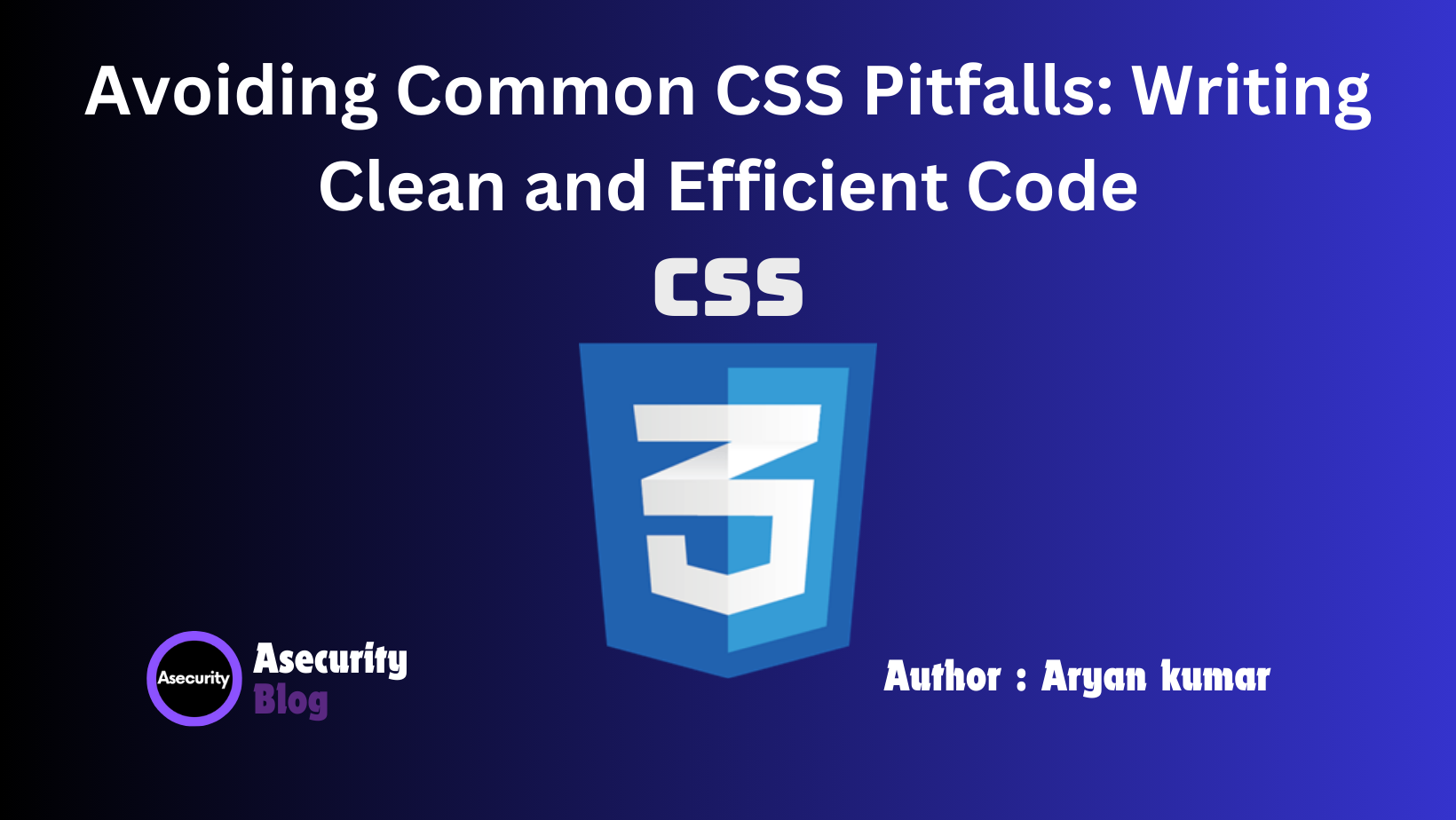Avoiding Common CSS Pitfalls: Writing Clean and Efficient Code

When starting out with CSS, it's easy to fall into certain traps that can result in messy, inefficient code. Understanding these common mistakes and learning how to avoid them will help you write cleaner, more maintainable stylesheets.
1. Overusing !important
While the !important rule can force a style to apply in cases where normal specificity would prevent it, relying too heavily on this rule is a sign that your CSS structure might need reconsideration. Overuse of !important leads to a cluttered stylesheet and makes debugging more difficult.
How to Avoid
Instead of using !important frequently, focus on understanding the CSS specificity rules. Ensure your selectors are specific enough to apply the desired styles. Refactor your styles when you find yourself needing !important too often. Only use it as a last resort when absolutely necessary.
2. Not Organizing Your CSS
A poorly organized stylesheet can make maintenance a nightmare. If you scatter styles without a clear structure, it will be difficult to find and update them later, leading to redundant and inefficient code.
How to Avoid
Adopt a clear structure for your CSS. Group styles logically, either by component (header, footer, buttons) or functionality (layout, typography). Consider using CSS preprocessors like Sass, which allow you to break up your CSS into smaller, reusable files.
3. Neglecting Browser Compatibility
Different browsers may render styles differently. If you don't test your styles across multiple browsers, you could end up with inconsistencies that affect the user experience.
How to Avoid
Always test your CSS across all major browsers, including Chrome, Firefox, Safari, and Edge. Use vendor prefixes where necessary (e.g., -webkit-, -moz-) for experimental features, and stay updated with browser support tables (like Can I Use) to ensure compatibility.
4. Overcomplicating Selectors
Beginners often write unnecessarily complex selectors, which increases the specificity and makes overriding styles more difficult. This can lead to a tangled web of selectors that are hard to manage.
How to Avoid
Keep your selectors simple and efficient. Instead of writing complex, deeply nested selectors (e.g., #main .content .box div p span), aim for clarity and avoid deep nesting when possible. Use class selectors whenever you can, as they are more reusable and easier to manage.
5. Ignoring the Cascade
The "Cascading" in Cascading Style Sheets refers to the order in which styles are applied. Beginners often struggle with how the cascade works, leading to confusion when their styles don't behave as expected.
How to Avoid
Take time to understand the CSS cascade, including inheritance, specificity, and the order of appearance. Know that inline styles have the highest specificity, followed by IDs, classes, and element selectors.
6. Not Using CSS Resets or Normalize
Different browsers have their own default styles for HTML elements, which can lead to inconsistencies if not handled properly. Without a reset or normalization, margins, paddings, and font sizes can vary across browsers.
How to Avoid
Use a CSS reset (like Eric Meyer's reset) or a normalize.css file to ensure a consistent baseline across browsers. These tools help remove the default styles, giving you a clean slate to work from.
7. Forgetting about Performance
Large stylesheets with unused or redundant CSS can slow down your website, leading to a poor user experience. Many beginners include excessive styles or fail to optimize their code.
How to Avoid
Keep performance in mind by removing unused CSS, minimizing file sizes, and using tools like CSS minifiers to compress your stylesheets. Also, adopt modular CSS practices, where each component or section of your site has its own dedicated styles.
8. Overlooking Responsive Design
In today’s mobile-first world, ignoring responsive design is a critical mistake. CSS that works well on desktops may break on smaller devices if not designed with responsiveness in mind.
How to Avoid
Implement responsive design principles from the start. Use relative units like em, rem, and percentages instead of fixed units like px. Leverage media queries to adjust your layout and styles for different screen sizes.
9. Not Using Variables
CSS variables (custom properties) make your code easier to maintain by allowing you to store values like colors, font sizes, and spacing in one place. Beginners often overlook this powerful feature.
How to Avoid
Take advantage of CSS variables by defining global values that you can reuse throughout your stylesheet. For example:
:root {
--primary-color: #3498db;
--font-size: 16px;
}
body {
font-size: var(--font-size);
color: var(--primary-color);
}
10. Hardcoding Values Instead of Using Flexbox or Grid
Many beginners hardcode widths, margins, and padding to create layouts, leading to rigid designs that are difficult to maintain and often break on different screen sizes.
How to Avoid
Use modern layout techniques like Flexbox and CSS Grid to create flexible, responsive designs. These methods allow for more fluid layouts without the need to hardcode specific dimensions.
Final Thoughts
By avoiding these common CSS pitfalls, you’ll be able to write cleaner, more efficient, and maintainable code. As you gain experience, you’ll find that a well-organized, thought-out approach to CSS will save you time and effort in the long run, while also improving the performance and usability of your websites.
Happy coding!
Author: Aryan Kumar is a web developer specializing in HTML, CSS, and JavaScript, working at Asecurity. Contact here (Instagram) : @aryan_geek .
#webdevelopment #html #css #javascript

